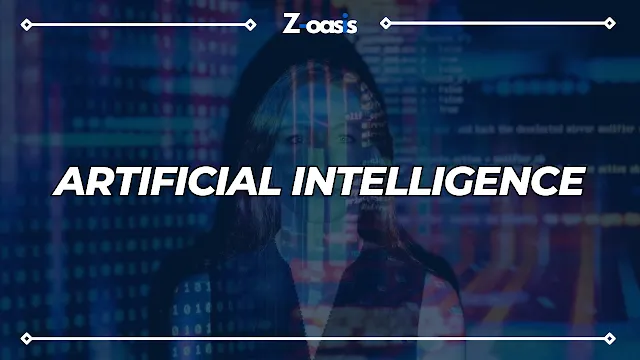Artificial Intelligence, often simply called AI, is a fascinating offshoot of computer science. It centers on forging clever machines capable of emulating tasks that, until now, necessitated human acumen. Among these key tasks, we have things like interpreting speech, solving complex conundrums, gaining knowledge, and making sound judgment calls. Over the years, AI's growth has been nothing short of remarkable, leading to its application in a broad spectrum of sectors, with education being no exception.
In an academic setting, AI involves the integration of sharp-witted devices and finely-tuned algorithms to intensify the educational process. AI-powered technologies have the capacity to dissect massive data piles, spot patterns, and project future trends. This hence allows a more personalized and adaptable learning journey for students. In this part, we'll delve deeper into AI and its potential effects on education, analyzing both its perks and pitfalls.
 |
| Grasping the Nuances of Artificial Intelligence |
Getting Down to the Nitty-Gritty: What's Artificial Intelligence?
Artificial Intelligence is a comprehensive area, inclusive of many subsidiary fields, such as machine learning, linguistic computation, digital visualization, and robotics. Particularly, machine learning is a subset that zeroes in on the creation of formulas to enable computers to gain knowledge from data, and consequently, make informed projections or decisions.
Machine learning formulas can be divided into two categories: supervised and unsupervised learning. With supervised learning, formulas learn from predetermined data, where the preferred result is well-known. They then learn to project or decide based on patterns they glean from the training data. Conversely, in unsupervised learning, these formulas work on undetermined data to identify patterns or links independently.
Artificial Intelligence and Education: The New Dynamic Duo
AI holds immense potential to turn the tables in the education sector by offering a tailor-made and evolving learning experience for students. Conventional education models revolve around a standard approach where all learners receive equal instruction and assessments, irrespective of their different capacities and skills. However, this common setup might be restrictive for some, as it doesn't accommodate the range of learning styles and capabilities that students may possess.
With AI's aid, educational structures can be tailored to each student's unique needs. Smart tutoring systems can modulate the content and pace of teaching based on a student's progress and preferred learning approach. Additionally, virtual assistants can give swift feedback and support, assisting students in overcoming obstacles and reinforcing their grasp of various concepts.
AI can also lend a helping hand to teachers in different facets of their work, like automatic grading and feedback, teaching planning, and professional advancement. By handling time-intensive duties, teachers can dedicate more attention to personalized instruction and lend a hand to students who require it most.
Weighing the Pros and Cons: AI's Role in Education
Melding AI into the educational system reaps several advantages.
- For starters, bespoke learning experiences can spike student engagement and motivation levels. When teaching methods align with their needs and interests, learners are likely to be more participative in the learning process leading to better academic results and a deeper comprehension of the subject matter.
- Secondly, AI affords students the opportunity to receive real-time feedback and support. Instead of waiting on reviews from their teachers, learners can get consistent feedback from smart tutoring systems or automatic grading setups. This immediate feedback aids in identifying and rectifying errors, thus strengthening their understanding and fostering a growth-centered mindset.
- Further, AI can help pinpoint students who may be struggling or at risk of lagging behind in their studies. Through data analysis on a student's performance and general learning behavior, AI can flag potential problems and signal the teacher to lend additional support. This precautionary measure ensures no student slips through the cracks unnoticed and receives the necessary support to excel.
However, employing AI in education comes with its own set of challenges. A major concern is the bias present in AI formulas, which can fuel inequalities and stereotypes if the training data used in developing such systems carries inherent biases. It's thus vital to ensure the fairness and transparency of these systems, coupled with a focus on acknowledging and overcoming any biases present.
Another obstacle relates to the ethical use of student data. AI systems depend heavily on an ample amount of data to make predictions and judgments. Hence guaranteeing privacy protection of students and maintaining responsible and secure handling of data is of utmost importance. Robust rules should govern the collection, storage, and usage of student data within AI in the education context.
Ethical Questions in AI Education
AI's marriage with education sparks several ethical debates. The key concern revolves around the prospect of AI edging out human teachers. Despite the undeniable advantages of AI in enhancing the learning journey, it shouldn't dethrone the teachers completely. Human interaction, compassion, and innate inventiveness are intrinsic aspects of the learning cycle that machines can't emulate.
Another ethical question is tied to the transparency and interpretability of AI formulas. It's integral that both students and teachers discern how these intelligent systems make their decisions. Hence, transparency in AI formulas is paramount, while also ensuring their decision-making processes are easy to understand to foster trust and accountability.
Moreover, it's critical that AI systems foster inclusivity and fairness. AI should avoid entrenching existing prejudices or ostracizing certain groups of students. Conscious efforts should be made to acknowledge and counter biases in these systems, ensuring equal opportunities for all learners.
Conclusion:
AI holds promising potential to revolutionize education by delivering personalized and dynamic learning experiences for students. It can amplify teaching techniques, automate tedious tasks, and deliver immediate feedback and support. Yet, its implementation in the world of academia should be paired with careful reflection on the ethical implications, like biases, privacy measures, and the irreplaceable role of human teachers. By tackling these challenges head-on, AI can truly revolutionize learning, making education more inclusive and fair for all the players involved.